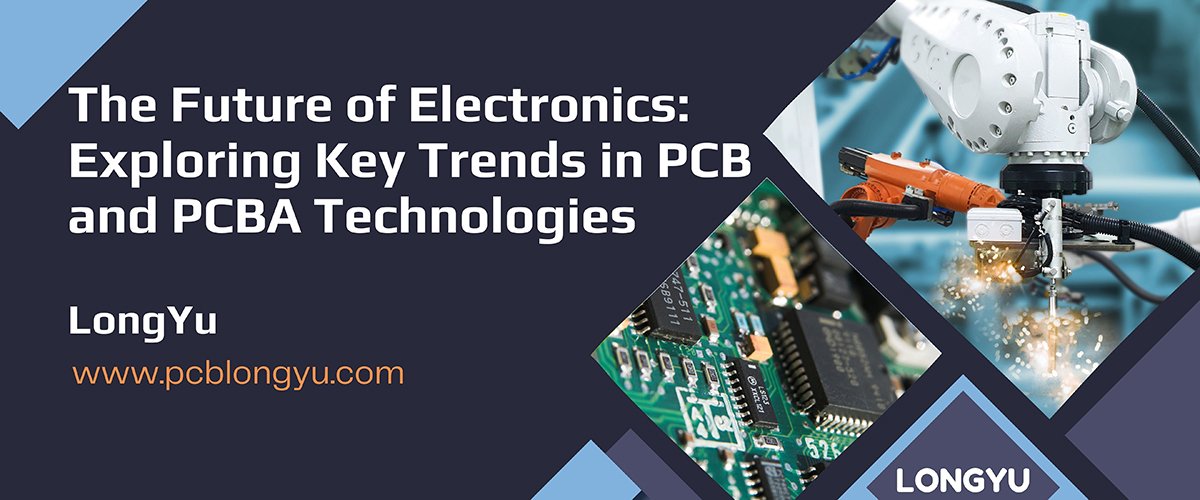
The Future of Electronics: Exploring Key Trends in PCB and PCBA Technologies
The Printed Circuit Board (PCB) and Printed Circuit Board Assembly (PCBA) industries are at the forefront of technological innovation, driven by the relentless demand for smaller, faster, and more efficient electronic devices. These advancements are shaping the future of electronics, enabling a wide array of applications in sectors like telecommunications, healthcare, consumer electronics, and more. Let’s delve into the key trends revolutionizing the PCB and PCBA industries.
1. Advanced Materials for Enhanced Performance
With the proliferation of 5G networks and high-speed data transmission, the need for PCBs that can handle high-frequency signals has intensified. Materials with superior dielectric properties, such as Teflon and Rogers 4000, are becoming increasingly popular. These materials improve signal integrity and minimize losses, making them ideal for high-performance applications.
2. Miniaturization and High-Density Interconnects (HDI)
As electronic devices become smaller and more complex, PCBs must accommodate high levels of integration. High-Density Interconnect (HDI) technology allows for compact and intricate circuit layouts, enhancing device performance without increasing their size. This trend is particularly relevant in wearable technology, smartphones, and IoT devices.
3. Flexible and Rigid-Flex PCBs
Flexible PCBs are gaining traction due to their lightweight, thin, and durable nature. These features make them suitable for cutting-edge applications such as medical devices, foldable smartphones, and wearable gadgets. Rigid-flex PCBs, which combine the advantages of rigid and flexible circuits, are also becoming a popular choice for complex designs.
4. Automation and Robotics in Manufacturing
Automation is transforming the PCB and PCBA manufacturing processes. Advanced robotic systems are streamlining surface-mount technology (SMT) assembly and improving precision in component placement. This shift enhances production efficiency and consistency while reducing costs and errors.
5. Artificial Intelligence (AI) and Machine Learning
AI and machine learning are optimizing various aspects of PCB and PCBA manufacturing. From intelligent design tools to predictive maintenance and real-time monitoring, these technologies are improving decision-making and operational efficiency, reducing downtime, and enhancing product quality.
6. Internet of Things (IoT) Integration
The rapid growth of IoT devices demands PCBs that are both reliable and energy-efficient. Manufacturers are exploring innovative designs and materials to meet these requirements, ensuring seamless connectivity and functionality in IoT applications such as smart homes, industrial automation, and healthcare monitoring systems.
7. Environmental Sustainability
Sustainability is becoming a priority in PCB manufacturing. Companies are adopting eco-friendly practices, such as using lead-free solder, recyclable substrates, and energy-efficient production methods. These initiatives align with global efforts to reduce environmental impact while maintaining high performance.
8. Additive Manufacturing (3D Printing)
3D printing is revolutionizing PCB prototyping and production by enabling the creation of complex designs with minimal waste. This technology allows for greater customization, faster turnaround times, and cost-effective manufacturing, making it a valuable tool in the industry.
9. Cybersecurity Measures
As PCBs play a critical role in IoT and connected devices, cybersecurity has become a major concern. Manufacturers are incorporating advanced security features, such as encryption protocols and authentication methods, to protect electronic systems from potential cyber threats.
The PCB and PCBA industries are evolving rapidly, driven by the demand for innovative and efficient solutions. From advanced materials and miniaturization to AI integration and sustainability, these trends are shaping the future of electronics. As technology continues to advance, PCBs will remain a cornerstone of modern electronic devices, enabling breakthroughs across various industries and applications.